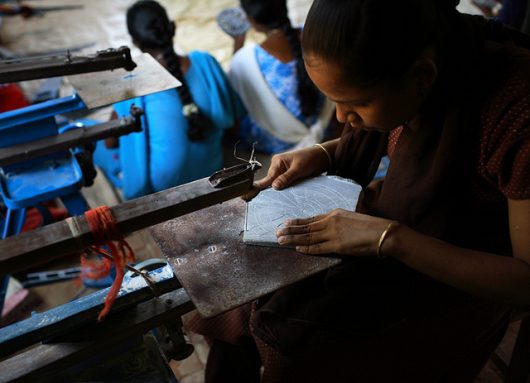The Past and Future of Poverty Reduction in India

Just this May, India was reported to have stepped down in the ranking of the largest number of poor people in one country when Nigeria took its previous place. India has increasingly been acknowledged for its poverty reduction efforts and results in the last 10 years. According to The World Bank, poverty in India has dropped from 38.9 percent to 21.2 percent in less than a decade since 2004.
However, despite the fact that there has been a lot of success in poverty reduction in India, there are still quite a few challenges ahead. This article will first discuss the driving force for success in the past and future strategies for further improvements.
Lessons from the Past—the Urban v. Rural Lens
Poverty reduction in India has been largely consistent with its patterns of economic growth since the 1980s. In other words, as India’s economy picked up its per capita income growth rate from 1.8 percent to 4.3 percent per year in around three decades, the rate of people climbing out of poverty has increased as well.
Before economic reforms of the 1990s, economic growth in rural areas was especially conducive for poverty reduction in India. Compared to growth in the manufacturing sector, growth in the agricultural and service sectors have shown better outcomes in alleviating poverty overall. Urban growth and manufacturing growth did not necessarily benefit the rural poor and its benefits in the urban population were far from consistent.
After the 1990s reforms, the patterns of poverty reduction shifted significantly. Urban growth came to be the key driver of poverty reduction in both urban and rural areas. The agricultural, service, as well as the manufacturing factors all accelerated poverty decline. Ultimately, urban growth is less favorable than rural growth in terms of distributional effects when trying to decrease poverty.
Uneven Growth
Poverty reduction advances at very different paces in different geographical areas in India. States including Kerala are decreasing poverty at a much faster rate than states like Bihar and Rajasthan. More strikingly, one’s gender, social status, and ethnicity are important factors when it comes to getting rid of poverty. Gaps of economic improvement across such identities are significantly wider.
The economic elites are also taking a larger share of economic advancement. Every year, the top 10 percent get more than half of the national income, which has increased significantly from the 1980s when the number was closer to a third. At the same time, the bottom 50 percent take a mere 15 percent.
To be Addressed
While the rate of extreme poverty has dropped, many are still living in “poverty” in India when factors like education and healthcare are considered. Therefore, stronger and more capable state services are in need in order for people’s living standards to continue to improve.
Specific social groups, including women and scheduled tribes, need to have to better access to participation in the country’s economic growth. As historically disadvantaged groups, their advancement will be beneficial to not only themselves but society at large. Participation among these groups needs to be encoraged and facilitated.
Like many countries in East and Southeast Asia, India is also facing an aging population—the workforce will likely shrink, the demand for elderly care will be overwhelming for the nation’s current welfare services, and there will be increasing concerns for poverty among the elderly.
Seemingly, India’s economy will continue to grow at its current rate. In order for India’s economic growth to have a significant impact on reducing poverty, a restructuring and rethinking of economic distribution need to happen. As some studies have shown, what works in urban areas doesn’t necessarily work in rural areas. The nation still has a lot to do to secure the lives of those who only recently struggled out of poverty and to work to bring the rest of its population out of poverty for good.
– Feng Ye
Photo: Flickr
